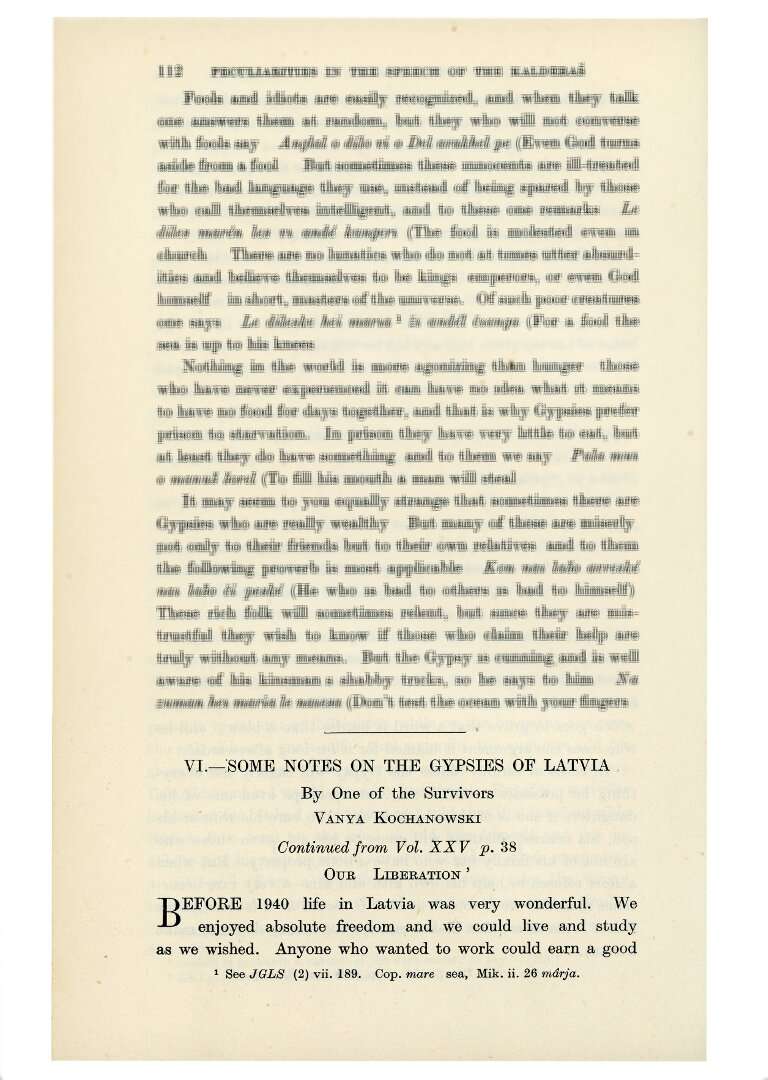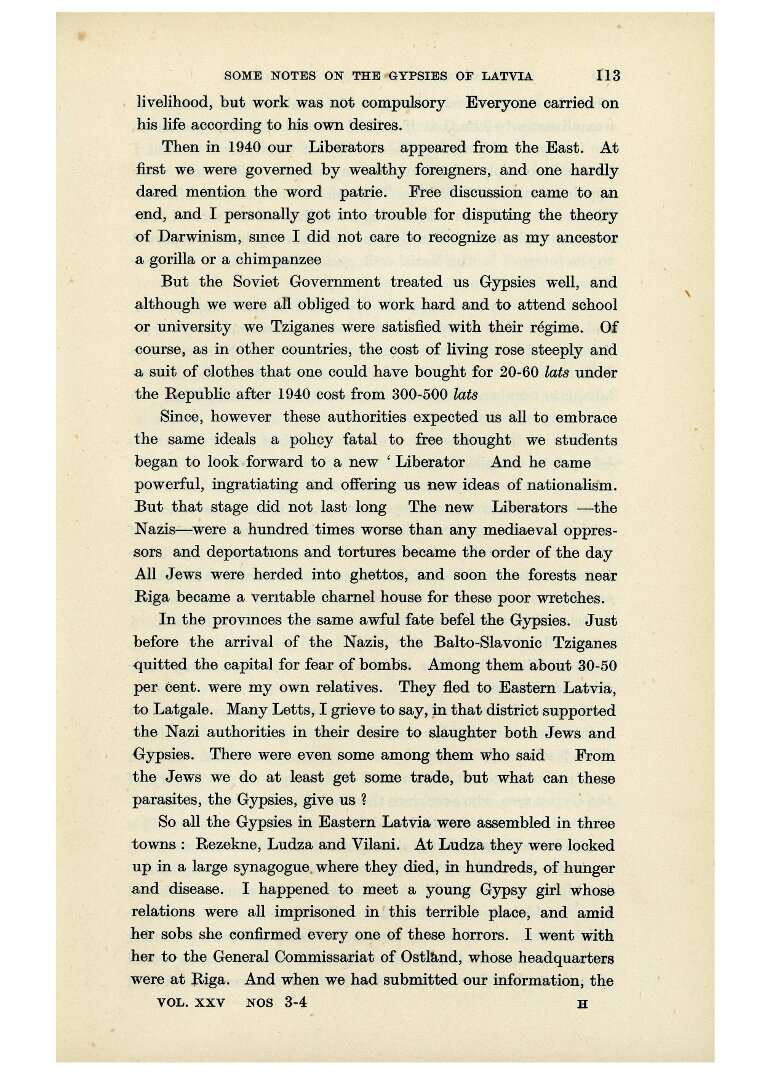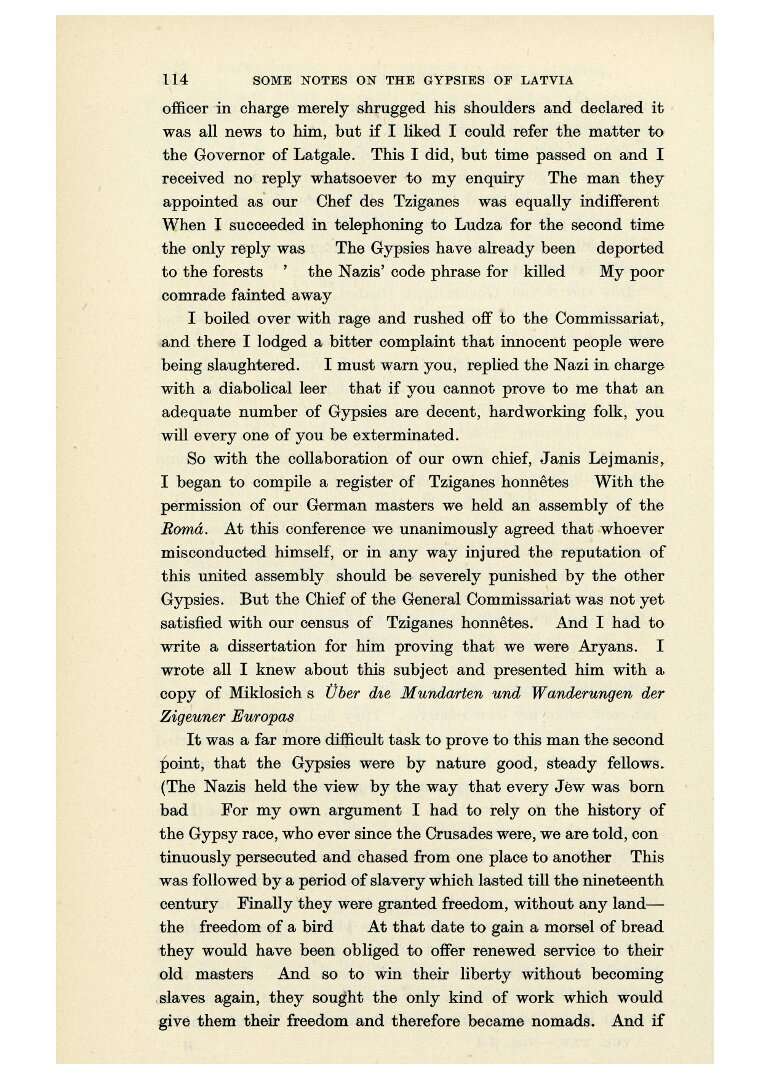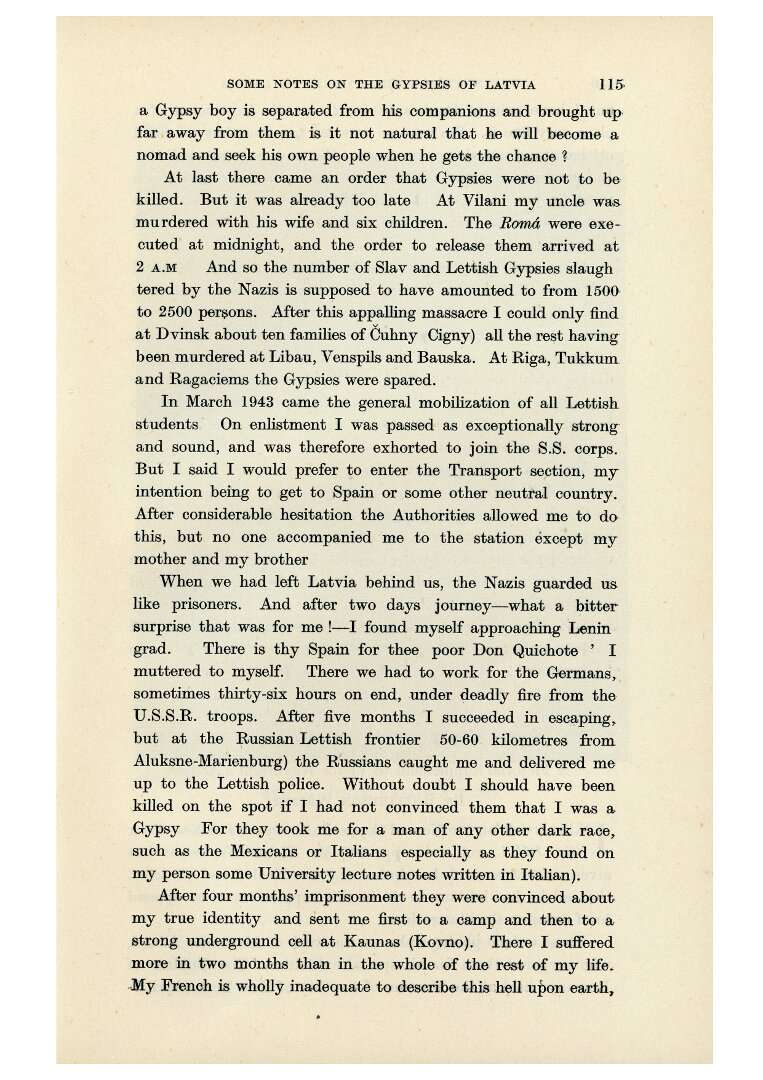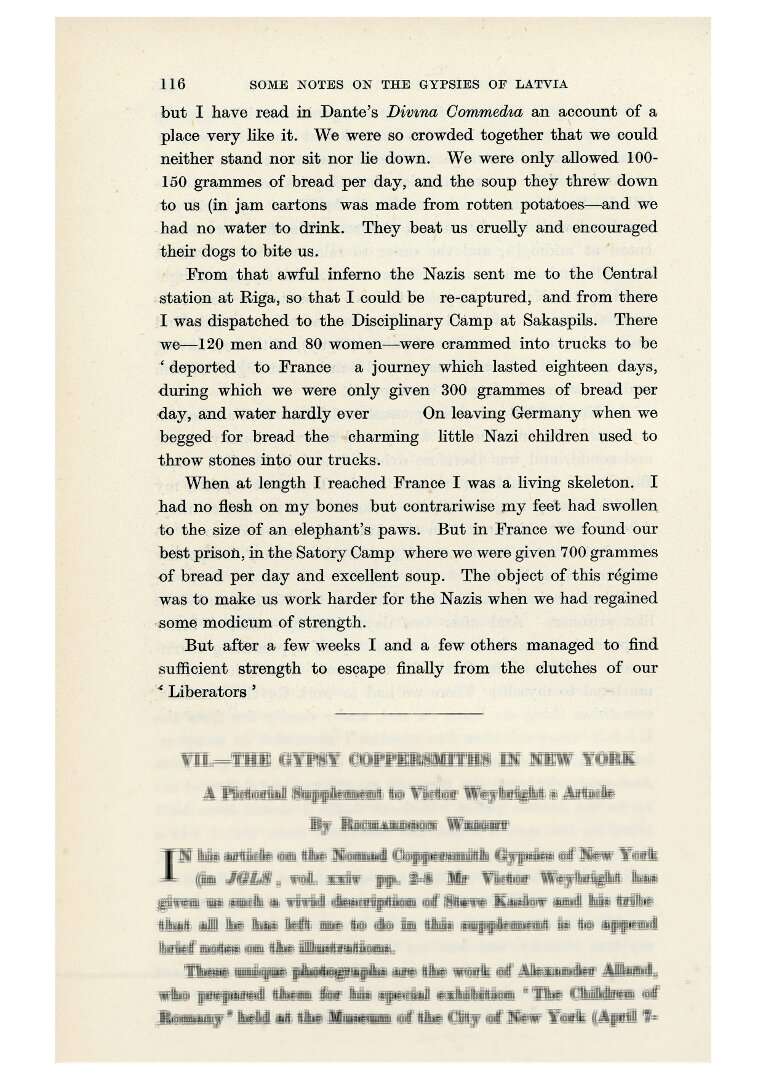SOME NOTES ON THE GYPSIES OF LATVIA
By One of the Survivors
Vanya Kochanowski
The new ›Liberators‹ – the Nazis – were a hundred times worse than any mediaeval oppressors, and deportations and tortures became the order of the day.
All Jews were herded into ghettos, and soon the forests near Riga became a veritable charnel-house for these poor wretches.
In the provinces the same awful fate befel[l] the Gypsies. Just before the arrival of the Nazis, the Balto-Slavonic Tziganes quitted the capital for fear of bombs. Among them about 30-50 per cent were my own relatives. They fled to Eastern Latvia, to Latgale. Many Letts [sic!], I grieve to say, in that district supported the Nazi authorities in their desire to slaughter both Jews and Gypsies. There were even some among them who said: ›From the Jews we do at least get some trade, but what can these parasites, the Gypsies, give us?‹
So all the Gypsies in Eastern Latvia were assembled in three towns: Rezekne, Ludza and Vilani. At Ludza they were locked up in a large synagogue where they died, in hundreds, of hunger and disease. I happened to meet a young Gypsy girl whose relati[ves] were all imprisoned in this terrible place, and amid her sobs she confirmed every one of these horrors. […]
At last there came an order that Gypsies were not to be killed. But it was already too late! At Vilani my uncle was murdered with his wife and six children. The Romá were executed at midnight, and the order to release them arrived at 2 A.M.! And so the number of Slav and Lettish [sic!] Gypsies slaughtered by the Nazis supposed to have amounted to from 1500 to 2500 persons. After this appalling massacre I could only find at Dvinsk about ten families of Čuhny (Cigny), all the rest having been murdered at Libau, Ven[t]spils and Bauska. At Riga, Tukkum and Ragaciems the Gypsies were spared.




